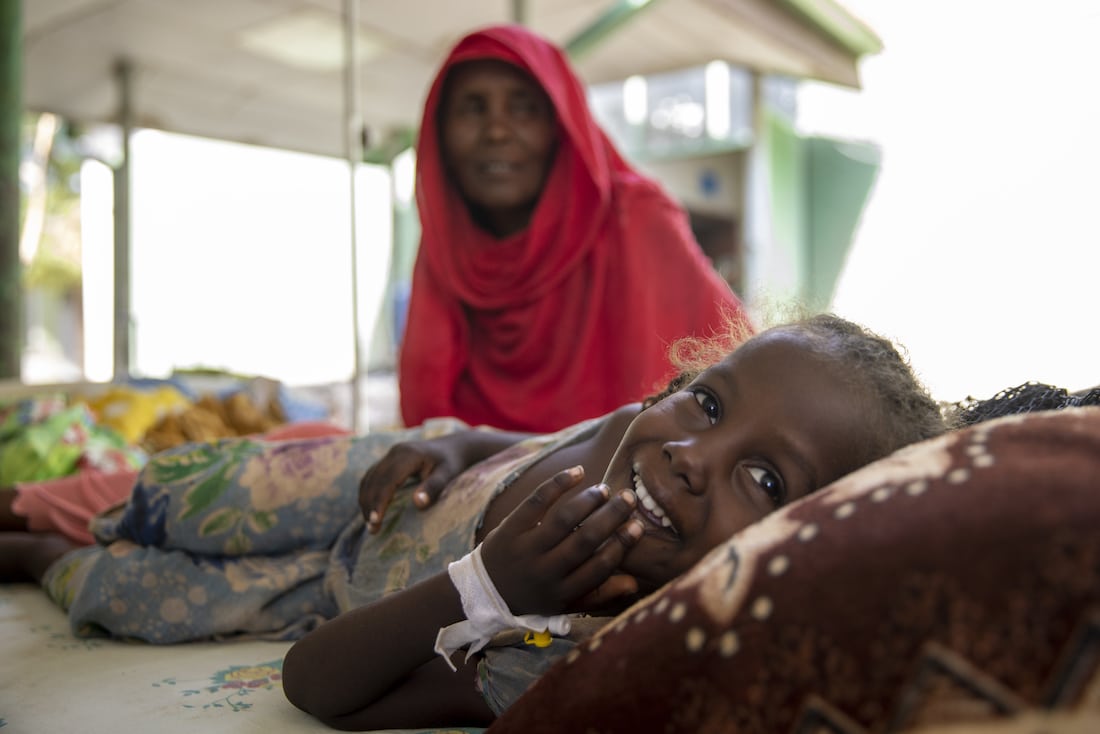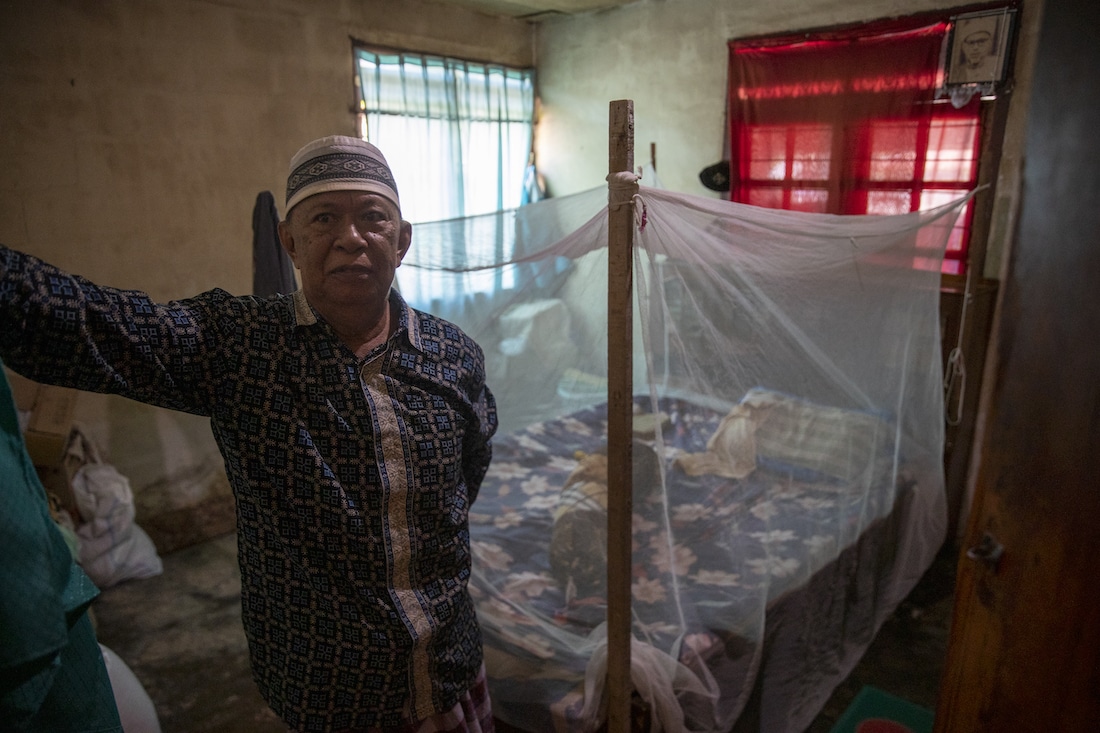
5 Things You Should Know About Malaria
Despite great progress in the fight against malaria, billions of people are still at risk for this deadly disease. Here's what you need to know.
Update: April 19, 2023
Nearly half the world’s population is at risk of falling ill with malaria, a life-threatening disease transmitted to humans by female Anopheles mosquitoes. The mosquitoes infect the liver, and subsequently red blood cells, with parasites that fly under the radar of our immune systems. Malaria causes fever, headache, vomiting, and chills, and — if not treated promptly and adequately — can lead to severe illness and often death.
In 2021, an estimated 247 million cases of malaria occurred worldwide, 95% of which were in Africa. More than 600,000 people died from Malaria in 2021, and 80% of those deaths were children under 5.
Malaria has been eradicated in much of the world, but it remains one of the most severe public health problems in poorer, tropical, and subtropical communities. In fact, it is a leading cause of death among children in areas of high transmission.
Here are five things to know about this deadly disease — and what we can do to stop it.

1) Malaria is most prevalent in sub-Saharan African countries.
Countries in Africa are home to 95% of global malaria cases. In fact, half of all malaria deaths worldwide in 2021 came from four countries: Nigeria (31%), the Democratic Republic of the Congo (13%), the United Republic of Tanzania (4%), and Niger (4%).
In this region, approximately 79% of all malaria deaths are young children. In 2021, approximately 467,000 children in Africa did not see their fifth birthday because of malaria.
Malaria transmission is most common in warmer climates close to the equator where mosquitoes thrive. This feature of geography — coupled with the fact that many in Africa have inadequate access to preventative measures — forms the conditions that make malaria such a significant global health threat on the continent.


2) Malaria is preventable and curable.
In April 2021, a malaria vaccine pilot program reported that it reached 650,000 children in Kenya, Ghana, and Malawi. Following the success of this pilot program and multiple clinical trials, the World Health Organization (WHO) confirmed that the vaccine is safe, feasible to deliver, cost-effective, and significantly reduces the threat of severe malaria disease. In October 2021, the WHO officially recommended the vaccine for widespread use among children in high-risk regions.
Currently, more than 1.2 million children in Ghana, Kenya, and Malawi are protected by the vaccine, and the United Nations Children’s Fund (UNICEF) has secured a supply of the vaccine to administer 18 million doses by 2025. If we can make this lifesaving vaccine available to all who need it, a world with zero malaria cases is possible.
Thankfully, long-time prevention measures like insecticide-treated mosquito nets and spraying indoor surfaces with residual insecticide significantly reduce the risk of malaria. In 2021, 47% of households in at-risk areas slept under protective nets, compared to 29% in 2010 and 2% in 2000. While this is a great improvement, half of those at risk remain unprotected.
Once malaria is contracted, if treated in a timely and adequate manner, patients can make a complete recovery. What treatment looks like depends on a variety of factors, including the specific type of parasite and severity of the disease. Pregnant women, infants, young children, people living with HIV, and people co-infected with tuberculosis are considered special risk patients that may require specialized treatment. However, lack of access to rapid treatment and health care are significant challenges.

3) The risk of malaria significantly increases in times of disaster.
Vector-borne diseases like malaria are more likely to spread after disasters — including humanitarian emergencies that displace large numbers of people and threaten access to sanitation and basic hygiene supplies. Malaria is a particular concern after natural disasters like cyclones and hurricanes that cause flooding because standing water can create optimal conditions for mosquitos to breed.
In 2018, Project HOPE responded to the critical medical needs in Palu, Indonesia after a massive earthquake and tsunami destroyed the lives of thousands of women, children, and men. As part of our response, we partnered with UNICEF to launch a program providing bed nets to displaced families in Central Sulawesi ultimately distributing more than 101,000 bed nets to tsunami survivors to prevent malaria.
In 2019 after Tropical Cyclone Idai in Mozambique, Project HOPE deployed medical volunteers to provide much-needed health care and coordinated with local partners to prevent the spread of diseases like cholera and malaria in areas affected by the disaster.
Of recent concern is the disruption of preventative services due to the COVID-19 pandemic. At the end of 2020, global distribution of insecticide-treated mosquito nets was affected so much that only 74% of the nets planned for distribution were successfully delivered. It is estimated that during the pandemic’s peak (from 2020 through 2021), disruptions in prevention and treatment accounted for approximately 13 million malaria cases and 63,000 deaths.


4) Malaria isn’t just a health issue in Africa.
Malaria cases in Latin America reached record highs of 1 million in 2017 and 2018, with 53% of cases in the region coming from Venezuela. While case counts are now about half of what they were in 2017, millions of Venezuelans have fled the country and are at risk of contracting malaria due to poor living conditions and the tropical climate.
Additionally, while there has been great success in combatting malaria in other regions, like Southeast Asia and the Western Pacific, antimalarial drug resistance and difficulties reaching remote populations affected by the disease pose threats to this success.


5) Progress is being made, but urgent action is needed.
The WHO estimates that about 2 billion cases of malaria and 11.7 million malaria-related deaths were prevented from 2000 to 2021. This is a global health triumph.
But our future success is not guaranteed. From 2015 to 2019, the number of malaria cases worldwide remained relatively unchanged. Then, in recent years both case rates and mortality levels saw severe upticks. In 2021, an estimated 619,000 people died from malaria — a level of mortality not seen since 2012.
Malaria is particularly difficult to combat because interventions heavily depend on political commitment, financial resources, and the strength of local and global public health infrastructures.
Another contributor to the worrying recent trends are increases in resistance to both the insecticides used to prevent the spread of malaria and the antimalarial drugs used to trat the disease. While these resistances have been identified in nearly all regions where malaria is present, more research is needed to identify the scale of the threat and coordinate a response. Additionally, we must invest in developing new medicines, insecticides, and vaccines.
To combat these obstacles and get us back on track, The WHO has set ambitious goals to eradicate malaria, including reducing the number of malaria cases and mortality rate by 90% by 2030. The WHO is calling for an urgent global response through the “High burden to high impact” program, led by countries most significantly affected by the disease. To achieve these goals, the global community will need to close a $3.8 billion funding gap and work together to adapt as the malaria threat evolves over the next decade.
Project HOPE is committed to playing an active role in the fight to end malaria for good.
How you can help
Make a lifesaving gift to support our work now and for the future at projecthope.org/donate
Are you a health-care or other professional who would like to learn more about volunteering abroad with Project HOPE? Learn more about our volunteer program and join our volunteer roster.
Stay up-to-date on this story and our lifesaving work around the world by following us on Facebook, Instagram, LinkedIn and Twitter, and help spread the word by sharing stories that move and inspire you.